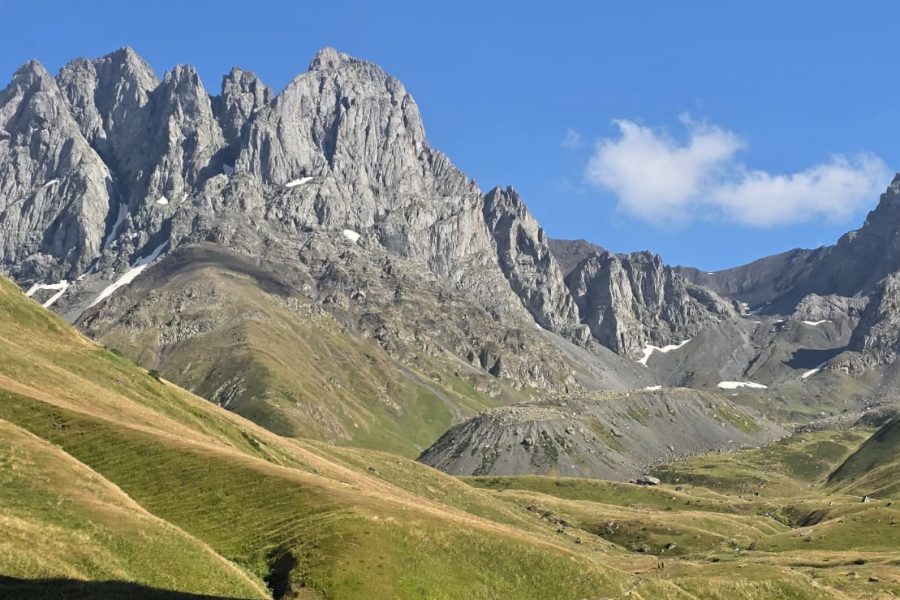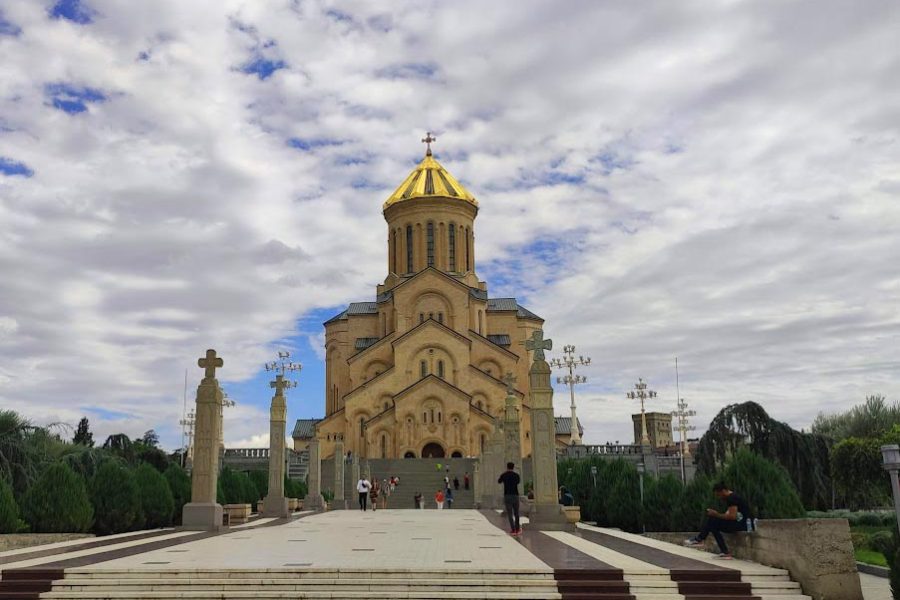Didghvabuni Fortress: The Lost Tower of the Khoni Highlands
Hidden deep in the mountainous, forest-clad highlands of Khoni, the lonely ruins of Didghvabuni Fortress tell a story of solitude and vigilance. This is not a site found on tourist maps or in grand historical chronicles. It is a lost outpost, a small watchtower that once belonged to a local feudal lord, whose world was the remote valley it guarded. A journey to Didghvabuni is an act of pure exploration, a quest to find a piece of Imeretian history that has been reclaimed by the wilderness.
The fortress was likely built in the late medieval period to serve as the eyes and ears of a small, isolated domain. Perched on a strategic hill, its primary purpose would have been observation. From its tower, a handful of guards could monitor the mountain paths and deep valleys, watching for the approach of raiding parties or the armies of rival lords. In times of danger, this small stone tower would have served as a first point of warning and a final, desperate refuge for the local noble family and perhaps a few villagers.
Today, Didghvabuni is a faint echo of its former self, with only the crumbling foundations of a tower and its enclosure visible among the trees. Built from the rock of the mountain it stands on, it is slowly merging back into the landscape. Its architecture is rustic and purely functional, designed for survival in a harsh and remote environment.
The appeal of Didghvabuni Fortress lies not in its scale or preservation, but in its profound sense of isolation and discovery. To find it is to step into a part of Georgia’s history that feels completely untouched and authentic. There are no crowds, no signs, only the silence of the forest and the stones that hold the faint memory of the watchmen who once stood here, gazing out over the same wild, green expanse.
This is a destination for the true adventurer, the historian who prefers to read the past not in books, but in the landscape itself. Didghvabuni is a testament to the countless small fortifications that once dotted the Georgian mountains, each one a vital, if forgotten, part of the nation’s story.
🗺️ Geography & Location
Exact Location:
Didghvabuni Fortress is located in the mountainous part of the Khoni Municipality in Imereti, Georgia. It is in a remote, forested area, likely near the historical village territory of Gvabuna (now part of the Kinchkha administrative unit).
Strategic Placement:
The fortress was sited on a hill to provide observation over a remote mountain valley and its associated paths, serving as a watchtower and local refuge.
Coordinates:
Approximately 42.4550° N, 42.4880° E.
📖 History & Background
Date of Construction & Origins:
The fortress is a late medieval structure, likely built between the 16th and 18th centuries by a local feudal family.
Historical Role:
It functioned as a watchtower and a small fortified residence (*tsikhe-galavani*) for a minor noble family, providing security for their immediate domain.
Status:
The fortress is a local heritage site, preserved only as scant ruins and is not an officially managed tourist site.
🏗️ Architecture & Design
Materials Used:
Constructed from local, undressed stone, typical for small, vernacular defensive structures in the mountains of Western Georgia.
Key Features:
- Watchtower Design: The core of the structure was a single tower designed for observation.
- Remote Location: Its primary defensive feature was its isolation and difficult-to-access location.
- Integration with Nature: The remaining ruins are heavily overgrown and integrated with the forest landscape.
Unique Aspects:
Its obscurity is its unique feature. It represents the hundreds of forgotten small-scale fortifications that formed the lowest, most local tier of the feudal defensive system.
🌟 Cultural & Tourist Significance
An Explorer’s Goal:
The fortress is not a tourist destination in the conventional sense, but a goal for hikers and explorers of historical geography looking for a true sense of discovery.
Untouched History:
It offers a raw, unfiltered glimpse into the past, without any modern restoration or interpretation.
🚶 How to Visit
Best Time of Year to Visit:
The summer months are the only feasible time to visit, due to the remote, high-altitude location and difficult terrain.
Accessibility:
Extremely difficult to access. It requires navigation through dense forests and mountainous terrain, likely without marked paths. A 4×4 vehicle and an experienced local guide are essential.




Leave a review